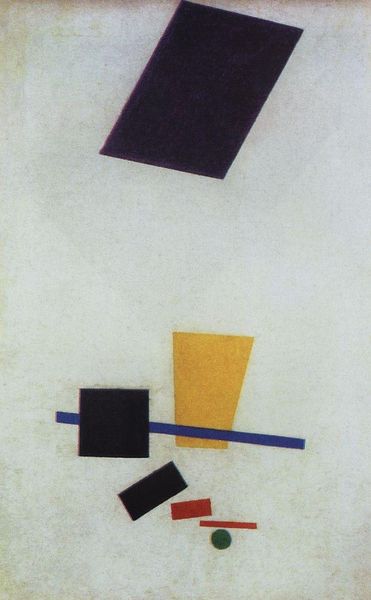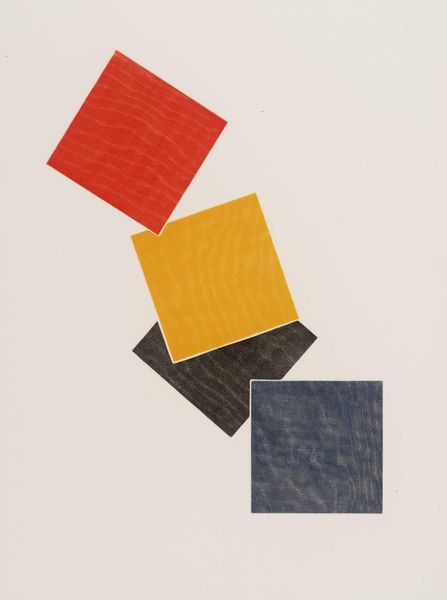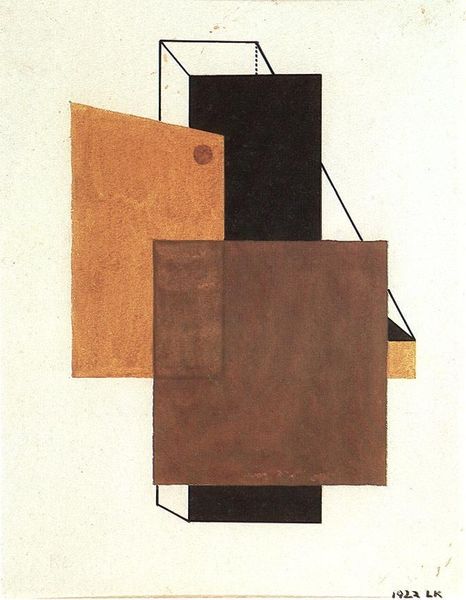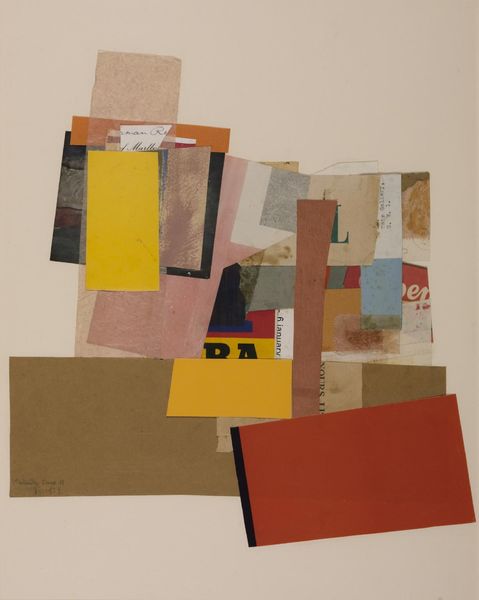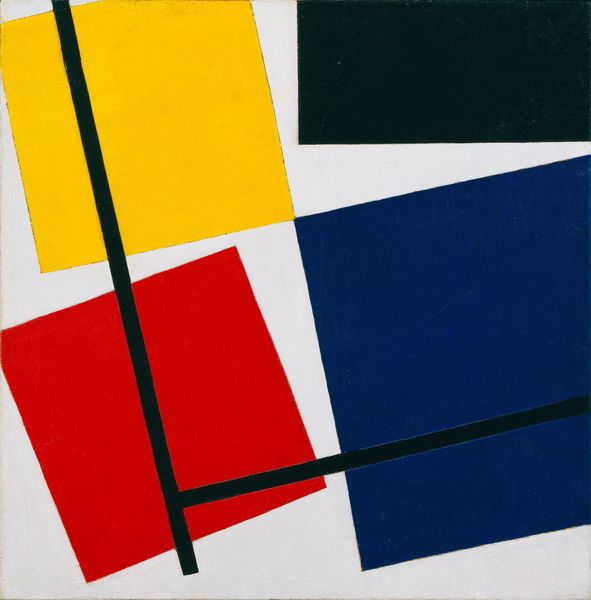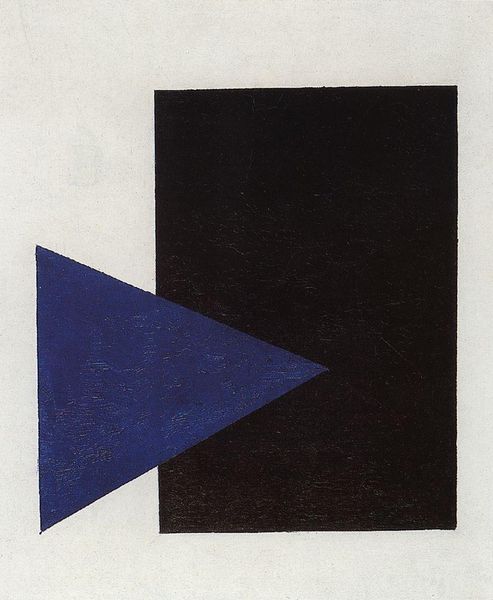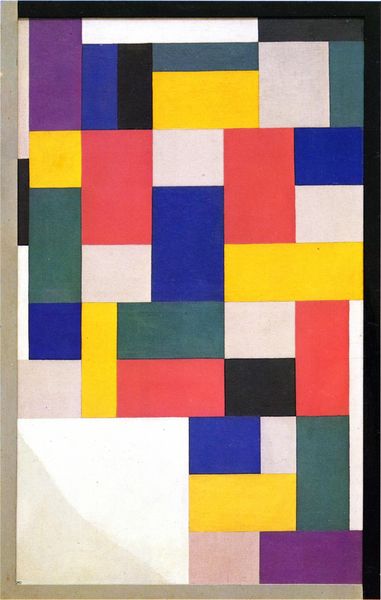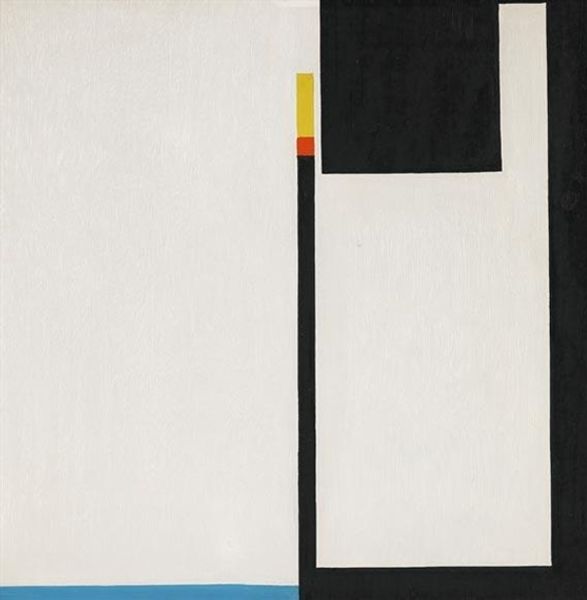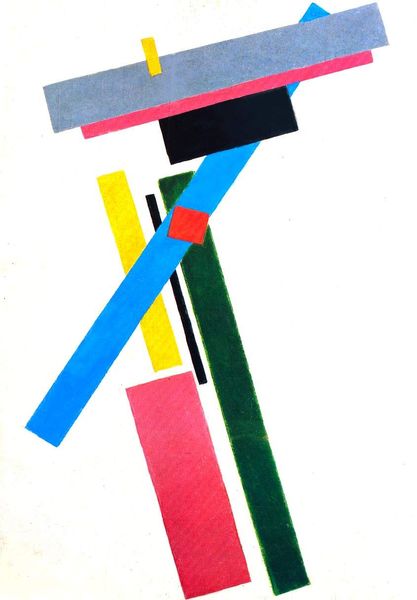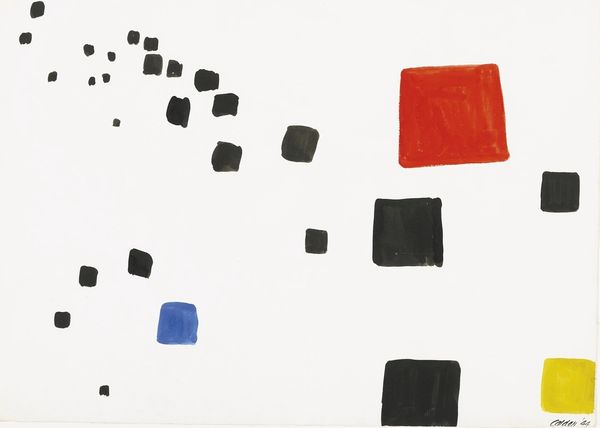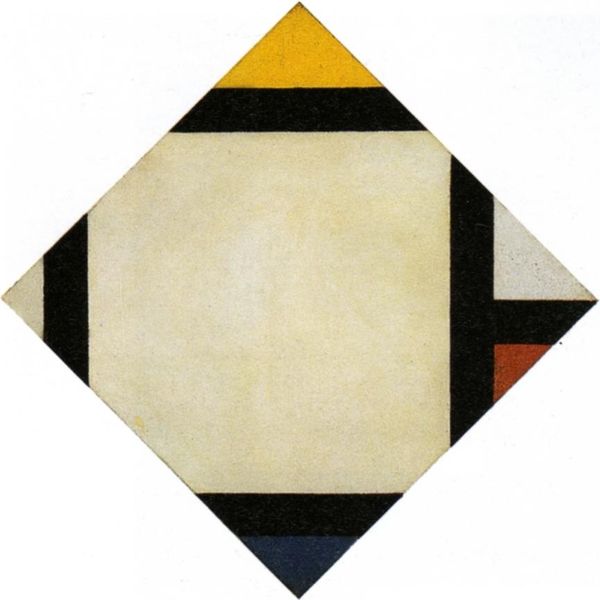
Suprematism. Two Dimensional Self Portrait 1915
0:00
0:00
kazimirmalevich
Stedelijk Museum, Amsterdam, Netherlands
painting
#
non-objective-art
#
painting
#
colour blocking
#
form
#
geometric
#
geometric-abstraction
#
abstraction
#
line
#
russian-avant-garde
#
suprematism
Dimensions: 80 x 62 cm
Copyright: Public domain
Editor: This is Kazimir Malevich's "Suprematism. Two Dimensional Self Portrait," painted in 1915. It's a striking arrangement of geometric shapes – squares, rectangles, and a circle, rendered in bold colours. It almost feels like looking at building blocks. What do you make of this… self-portrait? Curator: It's important to remember that Suprematism emerged within a very specific socio-political context. Russia in 1915 was on the brink of revolution, and art was deeply implicated in the seismic shifts occurring. This wasn't just about aesthetics; it was a radical proposition about the role of the artist and the purpose of art itself. So, the 'self' in 'self-portrait' isn't about a literal likeness. It’s about Malevich's artistic identity, breaking away from representation towards pure feeling, pure abstraction. Editor: So the shapes and colours...they're not symbolic in a traditional way? Curator: Not in the sense of a conventional symbol system. The intent was to create a visual language, free from the burden of the object, aiming for a 'pure' artistic expression divorced from the material world. It challenged the existing artistic institutions and traditions, demanding that art serve a revolutionary spiritual purpose. The square, especially, becomes a key motif – it represents feeling; white, the void beyond feeling. Editor: That's fascinating. Knowing the historical background gives me a whole new appreciation for how radical this was at the time. Curator: Exactly! The shapes challenge traditional forms and purposes of paintings to allow for pure emotion and the start of something completely new for art at the time. Editor: So much more than building blocks. Thanks for sharing your insight, it gives the work so much more gravity. Curator: Absolutely. Thinking about the social and political context is key for art appreciation!
Comments
No comments
Be the first to comment and join the conversation on the ultimate creative platform.
